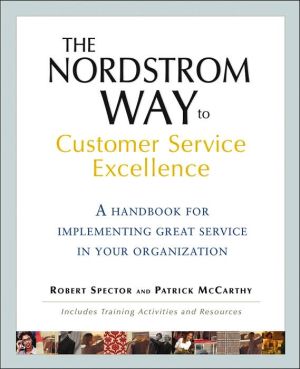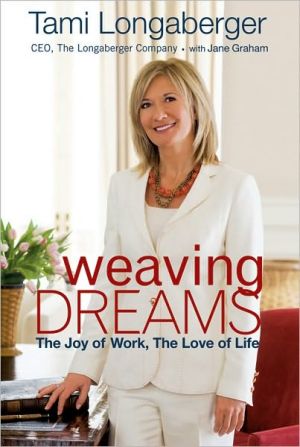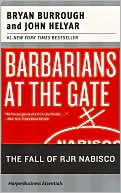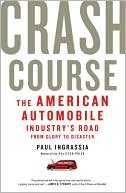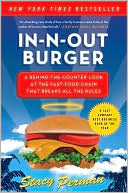The Nordstrom Way to Customer Service Excellence: A Handbook for Implementing Great Service in Your Organization: Includes Training Activities and Resources
First published in 1995, The Nordstrom Way is a classic guide to great customer service. This new book replaces The Nordstrom Way with an even more practical guide to becoming the “Nordstrom” of your industry. Designed for customer service managers and trainers, as well as business owners, it’s an invaluable resource for designing your own programs and initiatives. The authors not only explain the principles of the world’s best customer service company, they also show you how to implement...
Search in google:
In a guide including training activities and resources, Spector (a business writer) and McCarthy (who was a top Nordstrom's salesman for many years) trace this successful retailer's history and present stories of Nordstrom's legendary customer service ethic. The authors do address the occasional downside of the store's liberal return policy. Annotation ©2005 Book News, Inc., Portland, OR Library Journal Nordstrom's has long had the reputation for outstanding customer service. This book, coauthored by one of Nordstrom's top sales associates, McCarthy, tells how Nordstrom's earned that reputation. The work combines case studies and personal narrative with some history of the store. Each chapter helps the reader see one or more aspects of what has made Nordstrom's so successful, for example, "The Nordstrom Culture: Setting Employees Free," "The Art of Selling: Retailing Is a Contact Sport," and "What's Inside: Creating an Inviting Place." Each chapter is followed by a one- to two-page summary of the important points. Highly recommended for any business collection.-Michael D. Kathman, St. John's Univ. Lib., Collegeville, Minn.
The Nordstrom Way to Customer Service Excellence\ \ By Robert Spector \ John Wiley & Sons\ ISBN: 0-471-70286-2 \ \ \ Chapter One\ The Nordstrom Story How a Century of Family Leadership Created a Culture of Entrepreneurship, Consensus, and Service \ I know that the people who run the company are going to work as hard or harder than me. The same principles that were here before I got here will be in place after I retire. That's encouraging. I really like that.\ You can't teach culture. You have to live it. You have to experience it. You have to share it. You have to show it. -Brent Harris, Nordstrom's national merchandise manager for shoes\ Arriving at the lobby of the Nordstrom corporate offices, which is connected to the flagship store in downtown Seattle, a visitor is greeted first by the Nordstrom history and culture. On the walls adjacent to the elevators is a grainy, 100-year-old picture of founder John W. Nordstrom and his original partner, Carl F. Wallin, proudly standing outside their first tiny shoe store; and another shot, circa 1910, of the interior of the store, where mustachioed salesmen in rumpled suits are dwarfed by stacks and stacks of shoe boxes that are collected along the walls and piled high up to the ceiling.\ New employees attend orientation on the fifth floor of this building, which contains the John W. Nordstrom room, where the company holds its annual shareholders meeting, customer events, staff meetings, and pep rallies. All around arepictures of stores, various generations of Nordstroms, and numerous other reminders of the rich Nordstrom heritage and culture. An appreciation of what Nordstrom is all about cannot be fully grasped without an understanding of the company's culture. That's why the importance and the value of the culture are emphasized from the moment new employees come to work for the company.\ On one particular day, a dozen well-groomed and neatly dressed men and women are seated behind a horseshoe configuration of gray tables in a meeting room on the fifth floor of the corporate off ices. They are a racially diverse group; most are under the age of 30, a couple are closer to 50. What they have in common is that they are all new employees, awaiting the start of the one-day employee orientation that kicks off their career at Nordstrom. In front of each one of them is a half-inch-thick blue folder. The one word on the cover is "Welcome."\ On the inside, a separate sheet of paper contains these words:\ As we travel along the road of life, we encounter paths that lead to a great opportunity for growth. To recognize the doors that open to a bright future is the key. Once inside, we crave support from our colleagues. We know that the health of our relationships is paramount to our own success, and that the joy of sharing ideas leads to a diversity of options. Our reward is access to a wealth of knowledge that we would have otherwise overlooked. Welcome to Nordstrom. Our door is open.\ Inside the packet are separate folders containing information on the company, employee guidelines, compensation program, safety program, and employee benefits. There is also a 5 1/2-inch by 7 1/2-inch card-the Nordstrom Employee Handbook. One side of the card says:\ For some of these men and women, this day marks the birth of a long-term relationship that will bring them financial rewards and professional and personal fulfillment. For others, it is the beginning of the end. They will eventually leave Nordstrom because of what they will perceive as unreasonable demands, persistent pressure to reach a ceaseless series of sales goals, and relentless emphasis on providing the kind of all-encompassing customer service that has fed the Nordstrom mystique. But the future is for later. On this orientation day, these men and women are here to immerse themselves in that culture and its history.\ The History of Nordstrom: After the Gold Rush, a Store Is Born __________________\ Johan W. Nordstrom, like the founders of most of America's retail dynasties, was an immigrant. The middle child of five, Nordstrom was born February 15, 1871, in the town of Lulea, in the northernmost part of Sweden, 60 miles below the Arctic Circle. His father, a blacksmith, wagon maker, and part-time farmer, passed away when Johan was eight years old. By the time he was 11, his mother had taken him out of school so he could work on the family farm.\ His life in Sweden, by his own admission, was an unhappy one. As he got older, "my mother seemed to think I was a man, and often remarked that at my age my brother [10 years his senior] could do nearly anything and why couldn't I," he wrote. "I often cried when I had trouble doing things she expected me to do and couldn't, and felt very helpless."\ The winter he turned 16, Johan decided to leave home and cast his lot in America. With 450 crowns (about $112) of his modest inheritance, given to him by his guardian, he bought a suit of clothes. "The first clothes I had ever had on my back that were not homespun and hand woven." His eventual destination was the Pacific Northwest of America, where thousands of Swedes thrived as fishermen, loggers, blacksmiths, shipwrights, and millwrights in a climate and landscape similar to their homeland. Others helped finish the transcontinental railroad. "Give me enough Swedes," proclaimed James J. Hill, the driving force behind the Great Northern Railroad, "and I'll build a railroad right through hell."\ There were no railroads in northern Sweden, so Johan and two young friends began their odyssey with a two-day boat trip to Stockholm, followed by a three-day voyage across Sweden, through the Gota Canal, to Gothenburg, then on to Hull, in northeast England. The first train ride of Johan's life brought him to Liverpool, where he took steerage passage for the 10-day voyage to Ellis Island, New York. From there, Nordstrom and his friends, unable to speak a word of English, took a train to Stambaugh, Michigan, where he had a cousin and prospects for work.\ When he arrived in Michigan, Nordstrom, with five dollars in his pocket, took a job hauling iron ore with a wheelbarrow, carting it about a hundred feet to a platform and dumping it into railroad cars. For the next five years, his strong back and fierce determination carried him westward through a series of hardscrabble manual labor jobs: logging in Michigan, digging coal in Iowa, mining gold and silver in Colorado, loading railroad ties and carting brick in Mendocino County, California, and Douglas fir trees in Washington state. By the summer of 1896, Nordstrom had saved enough money to buy 20 acres of bottom land for potato farming in the Swedish immigrant enclave of Arlington, Washington, about 50 miles north of Seattle.\ Seattle: City of Opportunity __________________\ Seattle in the 1890s was "young, raw, and crude," wrote Roger Sale in Seattle, Past to Present. White settlers first reached the region in 1852. In 1860, a group of about 150 pioneers settled there. (By way of comparison, New York City in the 1850s already had paved streets and a store named R. H. Macy.) "They didn't come looking for paradise," said one wag. "They came for cheap real estate." From 1879 to 1890, population rocketed from 1,107 to 43,487, fueled by constant rumors that Seattle would be the terminus of the transcontinental railroad. The nascent city provided equal opportunity for God-fearing pioneers, entrepreneurial visionaries, scam artists, and ladies of the evening. The essence of the "Seattle Spirit" was "enlightened self-interest," wrote William C. Speidel, the city's iconoclastic historian, in his irreverent account, Sons of the Profits.\ The mood was feverish. With Seattle about to be connected by rail via the Great Northern Railroad to the rest of North America, making money was on everyone's mind. A leading banker of that era, N. B. Coffman, described the 1890s as one "of adventure and wildcat speculation ... such can never again be witnessed." Norman H. Clark wrote in Washington: A Bicentennial History: "There had been nothing like it in the American history since the opening of the Louisiana Territory-golden years where no personal ambition, however grandiose, seemed at all unreasonable, when it seemed that every venture might prosper and every family might share in the nobility of wealth because of the democracy of profit."\ At breakfast, on Sunday morning, July 18, 1897, Johan Nordstrom picked up a copy of the Seattle Post-Intelligencer to see splashed across the front page, in huge capital letters, the magic word: "GOLD!" Coarse gold had been found in the fields of the Klondike, in Canada's Yukon Territory. Five thousand people greeted the steamer Portland when it arrived on July 17 at the Seattle waterfront with a much-ballyhooed cargo-"a ton of gold." Coupled with the arrival in San Francisco of the Excelsior, with another heavy cargo of gold, the news ignited the world.\ Johan (who Anglicized his name to John) read the story "over and over again ... discussing this big news," he recalled in his memoir. "Finally I slammed the paper down on the table and said, 'I'm going to Alaska!'" Nordstrom gathered his belongings and "what little money I had and by four o'clock that afternoon I was on the train bound for Seattle and a new adventure." Arriving at the Seattle waterfront early the following morning, he found a virtually endless line of people waiting to buy tickets for Alaska. When the coal freighter Willamette steamed out of Elliott Bay, Seattle, heading north for the Inland Passage, it was burdened with 1,200 men, 600 horses, 600 mules, and John Nordstrom. Because he had second-class passage, Nordstrom slept with the mules.\ Reaching Port Valdez, Alaska, in Prince William Sound that summer, was merely the beginning ofNordstrom's thousand-mile adventure to his ultimate destination: Dawson, the frontier town in the heart of the gold fields. He battled cold, snow, rain, storms, and wind-mostly on foot, because his horse died along the way and had to be butchered for food. From Skagway, he walked over the frozen solid Klondike River into tiny Dawson, only a year old, but "as lively a little place as you'd ever see," he recalled. "There were many saloons, dance halls, and gambling houses, all waiting for the poor miner to spend his hard-earned gold."\ For the next two years, Nordstrom struggled in the gold fields, taking a series of jobs to keep going. Finally, his luck changed: He struck gold. After Nordstrom staked his claim on the strike, another miner challenged it. The Canadian Gold Commission settled claim disputes but, unfortunately for Nordstrom, the man who made the competing claim was "a government man and a possible friend of the Gold Commissioner," Nordstrom wrote in his memoir. (Corruption was not unknown in the Yukon.) Nordstrom's friends advised him to sell his claim to the other man, rather than hold out and possibly wind up with nothing. After paying his legal expenses, Nordstrom ended up with $13,000 (more than $250,000 in today's dollars), which "looked like a lot of money to me, so I decided that I had had enough of Alaska and returned to Seattle," Nordstrom recalled. [The gold strike eventually netted the other man a reported $5 million.]\ A booming Seattle was roaring into the twentieth century, fueled by the financial windfall of an unprecedented rush of new arrivals and the Klondike gold rush. "There was a swagger in its walk, a boldness in its vision," a historian wrote about Seattle. "Out here, on the edge of the continent, the great Pacific lapping at the front door, all things seemed possible."\ In Seattle, John Nordstrom moved in with his sister. Sometime later, he renewed his acquaintance with Hilda Carlson, a Swedish girl he had taken out a few times before going to Alaska. Soon after, in May 1900, he married Hilda. They honeymooned in Sweden where they visited each other's homes, which were 24 miles apart.\ "Looking around for some small business to get into," Nordstrom wrote in his privately published 1950 memoir, The Immigrant in 1887, he often visited an old Klondike pal, Carl F. Wallin, a shoemaker with a bushy walrus moustache, who had set up a little 10-foot-wide shoe repair shop on Fourth Avenue and Pike Street. Wallin suggested that he and Nordstrom form a partnership in a shoe store that would be established on the site of the repair shop. Nordstrom agreed, putting up $5,000; Wallin added $1,000. Some of the money was used to fix up the store, which was immediately expanded to 20 feet. With $3,500, they bought an inventory of shoes and opened their doors to customers in 1901. The store was named Wallin & Nordstrom.\ Imagine Nordstrom, a 30-year-old man who had just purchased his first high-quality wool suit, ill fitting, no doubt, with fabric bunched up at the knees and elbows. He spoke only broken English and knew nothing about shoes or about selling. What he did know was that hard work and tenacity had always paid off for him. In his memoir, Nordstrom recalled the very first day of business:\ I had never fitted a pair of shoes or sold anything in my life, but I was depending on Mr. Wallin's meager knowledge of shoe salesmanship to help me out. Well, this opening day we had not had a customer by noon, so my partner went to lunch. He had not been gone but a few minutes when our first customer, a woman, came in for a pair of shoes she had seen in the window. I was nervous and could not find the style she had picked out in our stock. I was just about ready to give up when I decided to try on the pair from the window, the only pair we had of that style. I'll never know if it was the right size, but the customer bought them anyway.\ Opening day sales totaled $12.50.\ The next day, Saturday, the store stayed open from eight o'clock in the morning until midnight; receipts were $47. By the end of that first summer, Saturday sales sometimes were as high as $100. "We both allowed ourselves a salary of $75 a month and got along fine on this amount," Nordstrom wrote.\ What is important about the story of Wallin & Nordstrom's first sale is that John Nordstrom, without even realizing it, hit on one of the foundations of The Nordstrom Way: "Do whatever it takes to take care of the customer, and do whatever it takes to make sure the customer doesn't leave the store without buying something." More than a century later, the same principle still applies.\ Wallin & Nordstrom steadily grew their business, periodically moving to larger spaces in downtown Seattle. Eventually, John's eldest sons, Everett W., born in 1903, and Elmer J., born a year later, began working in the store when each of them reached the age of 12, establishing a Nordstrom family tradition that has continued to this day across four generations. In the late 1920s, after gaining experience working for other retailers, Everett and Elmer bought out their father and Carl Wallin, and took ownership of the business, which comprised a couple of stores, employing about a dozen clerks. They soon changed the name of the store from Wallin & Nordstrom to "Nordstrom's." They would eventually settle on "Nordstrom." Years later, when friends asked John if he hadn't taken a big risk by putting virtually his entire net worth into the hands of his relatively inexperienced sons, he replied, "I only went through the sixth grade in grammar school in Sweden. My boys are college graduates. They must be a lot smarter than I ever was."\ Elmer and Everett, who were later joined by their younger brother Lloyd, built Nordstrom's into the biggest independent shoe retailer in the United States. The company expanded into women's apparel in 1963, with the acquisition of a Seattle specialty shop called Best's Apparel, Inc., a fashionable downtown Seattle retailer, with a second store in downtown Portland, and renamed the company "Nordstrom Best." (John and Hilda's other children were daughters Esther and Mabel [who passed away in 1919], The daughters were not in the business.)\ (Continues...)\ \ \ \ \ Excerpted from The Nordstrom Way to Customer Service Excellence by Robert Spector Excerpted by permission.\ All rights reserved. No part of this excerpt may be reproduced or reprinted without permission in writing from the publisher.\ Excerpts are provided by Dial-A-Book Inc. solely for the personal use of visitors to this web site. \ \
1The Nordstrom story : how a century of family leadership created a culture of entrepreneurship, consensus and service32Spreading the service culture : publicly celebrate your heroes; promote from within253Line up an cheer for your customer : create an inviting place to do business414How can I help you? : provide your customers with lots of choices695Nordstrom's #1 customer service strategy : hire the smile896That's my job : empower employees to act like entrepreneurs to satisfy the customer1137Dump the rules : tear down the barriers to exceptional customer service1418This is how we do it : manage, mentor, and maintain great employees1559Recognition, competition, and praise : create a sustainable, emotional bond with your employees17110Sell the relationship : how frontline salespeople create lifetime customers19111The sale is never over : secrets of Nordstrom's all-time top-performing salesperson21112Play to win : encourage teamwork and team competitions at every level of your organization231AppNordstrom heroics : inspirational tales of teamwork and legendary customer service253
\ Library JournalNordstrom's has long had the reputation for outstanding customer service. This book, coauthored by one of Nordstrom's top sales associates, McCarthy, tells how Nordstrom's earned that reputation. The work combines case studies and personal narrative with some history of the store. Each chapter helps the reader see one or more aspects of what has made Nordstrom's so successful, for example, "The Nordstrom Culture: Setting Employees Free," "The Art of Selling: Retailing Is a Contact Sport," and "What's Inside: Creating an Inviting Place." Each chapter is followed by a one- to two-page summary of the important points. Highly recommended for any business collection.-Michael D. Kathman, St. John's Univ. Lib., Collegeville, Minn.\ \
